Curious about matcha tea? Discover everything you need to know in this complete guide—from health benefits and how to make it, to matcha’s deep roots in Japanese culture.
Table of Contents
What is matcha tea?
Matcha is a type of green tea that originates from China and has gained popularity in Japan over time. Originally, it was only consumed in places of worship and Zen spaces, which eventually led to the development of a tea ceremony. Unlike other green teas, matcha is consumed in the form of a finely ground green powder, hence its name, which means “ground tea” in Japanese.
This exceptional green tea is mainly grown and handpicked in the city of Uji, a small town a few kilometers from Osaka. It is cultivated naturally with minimal exposure to sunlight to preserve its unique flavor, and only the highest quality leaves are selected by experienced farmers. These leaves are then carefully dried and manually ground into particles as small as 10 microns to produce a fine, lump-free matcha tea powder that is ready to be steeped.
How to consume matcha?
Matcha is an incredibly versatile product that pairs well with a range of flavors, including white chocolate, and is highly favored in culinary applications. This green tea powder is a popular ingredient in pastries such as cookies, muffins, mousses, creams, and ice creams. Additionally, it is commonly used to make matcha lattes or hot infused tea, which are highly sought after by tea enthusiasts.
Expert tips:
- To distinguish between good and bad matcha, look for fresh, high-quality Japanese matcha with a bright green color. Matcha green tea powder tends to oxidize quickly, causing it to lose its vibrant hue and turn dull.
- Wondering if you really need to invest in a Japanese matcha whisk? The answer is no. You can use a regular whisk instead of spending money on a bamboo whisk for making matcha drinks. While it may be a little harder to dissolve the powder, it will still work.
- When it comes to water temperature, avoid using boiling water as it will damage the flavor and quality of the matcha. Instead, add cold water to the matcha powder. While this may make it harder to dissolve, it will also reduce the bitterness.
What are the benefits of matcha tea?
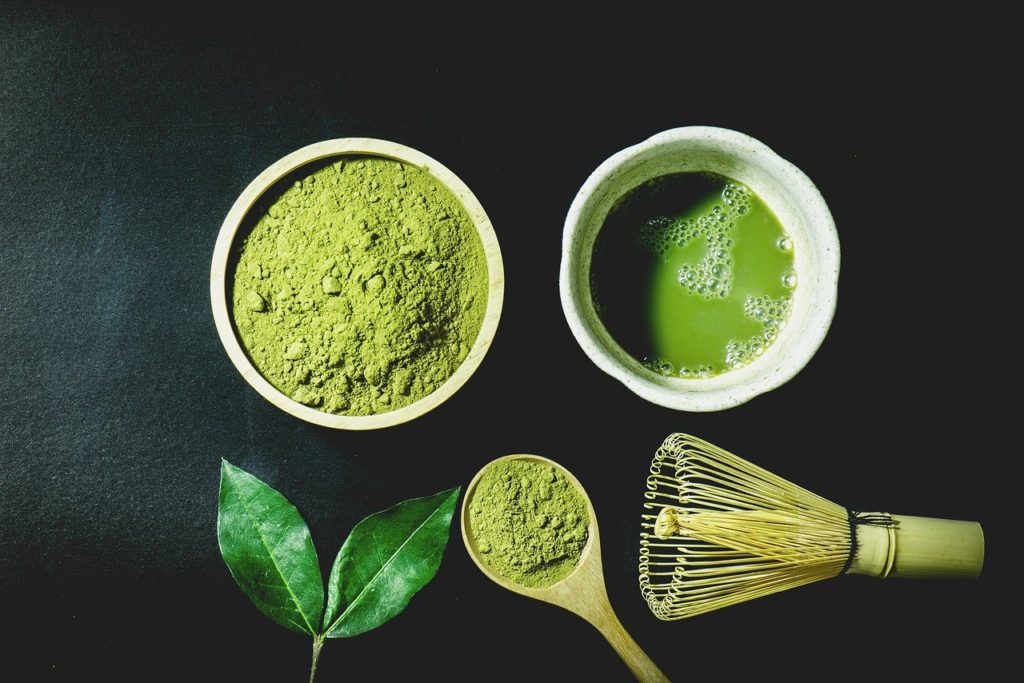
Matcha tea is widely known for its positive impact on the body, offering plenty of wellness benefits. Its herbaceous taste conceals essential secrets that promote a healthy mind and body. As with most green teas, matcha is rich in antioxidants and anti-inflammatory properties, providing the body with a lot of vitamins such as vitamin C and E. Additionally, like other green plants, matcha is high in chlorophyll, a vital source of magnesium that aids in eliminating toxins from the body.
Matcha also provides a natural and stimulating energy boost due to its caffeine content. Furthermore, it contains theanine, which reduces stress and promotes relaxation. This is one of the primary reasons why matcha was once the main drink in Asian Zen spaces.
Adding matcha into your daily routine can provide health benefits and boost your vitality. However, it’s important to avoid exceeding 3-4 cups per day, as excessive consumption may sensitize your intestinal flora. With its numerous health benefits and delicious flavor, matcha is an excellent addition to any wellness routine.
When to drink matcha tea?
Matcha is a very relaxing tea that will provide you with lots of vitamins and energy to start or continue a day . It is rather recommended to consume it in the morning and at the beginning of the afternoon, for example after a good meal to give your body and brain a boost.
How many cups of matcha tea to drink per day?
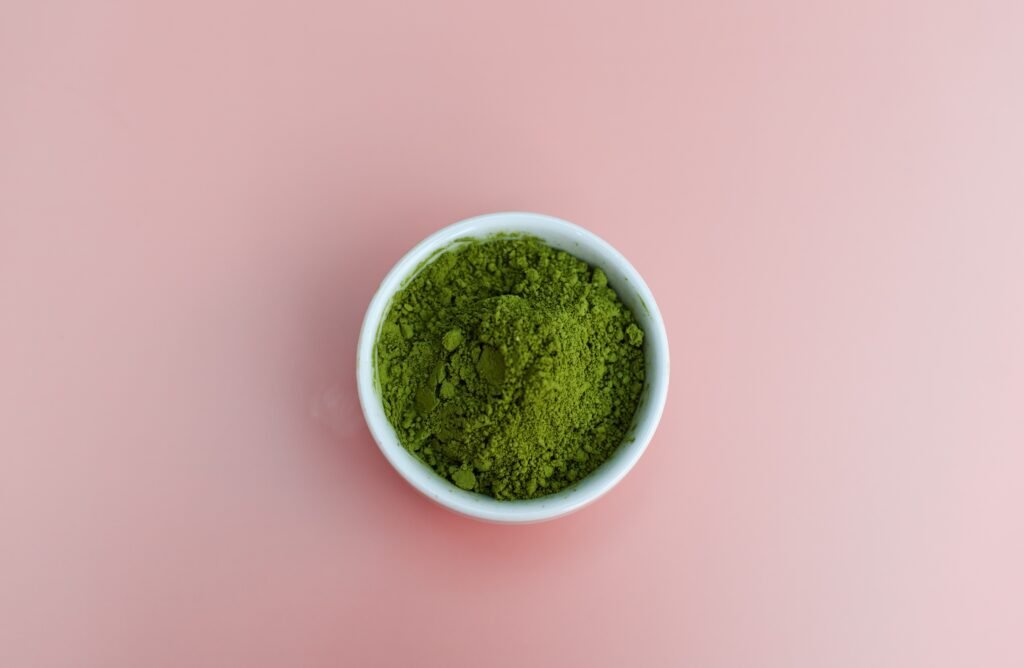
Matcha is widely recognized as one of the most potent antioxidant teas due to its unique green color and manufacturing process. Unlike black teas, it can be consumed in larger quantities without harming the body, providing essential minerals necessary for a productive day. Experts generally recommend drinking 1 to 2 cups of matcha tea per day to reap its numerous benefits.
However, it’s important to exercise caution and avoid excessive consumption. Drinking an entire teapot of matcha tea can have negative effects, such as a reduction in iron levels in the body and potential stomach discomfort. Therefore, it’s important to drink matcha tea in moderation and pay attention to your body’s response to ensure you’re enjoying its benefits without overdoing it.
Where does matcha come from?
Matcha may be currently experiencing a surge in popularity among trendy cafes and younger generations, but its rich history dates back to the 12th century when it was consumed exclusively in Japanese places of worship and Zen spaces accessible only to certain members of society. It is said that samurai warriors would consume matcha before battle to provide them with strength and essential nutrients.
Like sushi and ramen, matcha tea is an iconic symbol of Japanese culinary art, but its origins can be traced back to China. The tea plant, Camellia Sinensis, was initially cultivated exclusively in southern China before being modified and refined by the Japanese to create a fine, green powder known as “ma” (powder in Japanese) and “cha” (tea in Japanese). This resulted in the production of a rare and powerful Japanese tea that was reserved for Buddhist temples and elite spaces, where it was enjoyed in the form of a tea ceremony that became an art form in its own right.
How is matcha made?
To learn about all the methods of making tea and discover the other kinds of Japanese teas, do not hesitate to read our article on all kinds of Japanese tea: the complete guide.
What to know about matcha
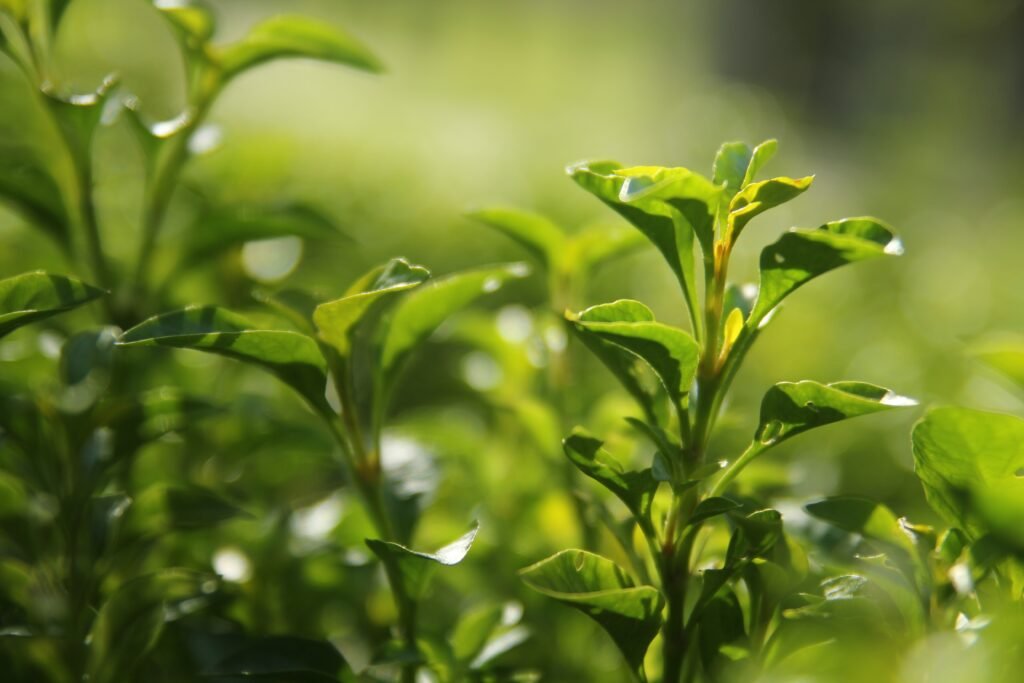
You may already be familiar with matcha tea, having perhaps indulged in a vibrant green matcha latte or admired its colorful powder. However, you may not yet be aware of the numerous health benefits that this magical powder can provide to your body.
- Matcha tea is truly a unique drink, originating from southern China and introduced to Japan in the 12th century. Unlike other green teas, matcha is finely ground into a 10-micron powder, which is why you will never find matcha tea bags. Instead, the powder is simply stirred into hot or cold water or milk, allowing all of its flavors and benefits to be fully enjoyed.
- Traditionally, matcha tea was exclusively consumed during a tea ceremony, a beautiful and serene ritual that cuts out all phases of tea presentation, almost in a theatrical form. This ceremony can last up to 20 minutes and is a pleasure to watch. It’s common to have a small wagashi pastry during the ceremony, which helps balance out the natural bitterness and herbaceous flavor of matcha.
- It’s important to pay attention to the water-to-powder ratio when making matcha tea, as this can affect its taste significantly. Be sure to use spring water to avoid any interference with the tea’s delicate flavors.
- One of the benefits of matcha tea is its versatility in cooking. It can be used in a variety of sweet or savory dishes, as well as in unique beverages. Whether you’re enjoying matcha in a classic tea ceremony or incorporating it into your favorite recipes, this rare green tea is sure to delight your senses.
How to prepare matcha tea?
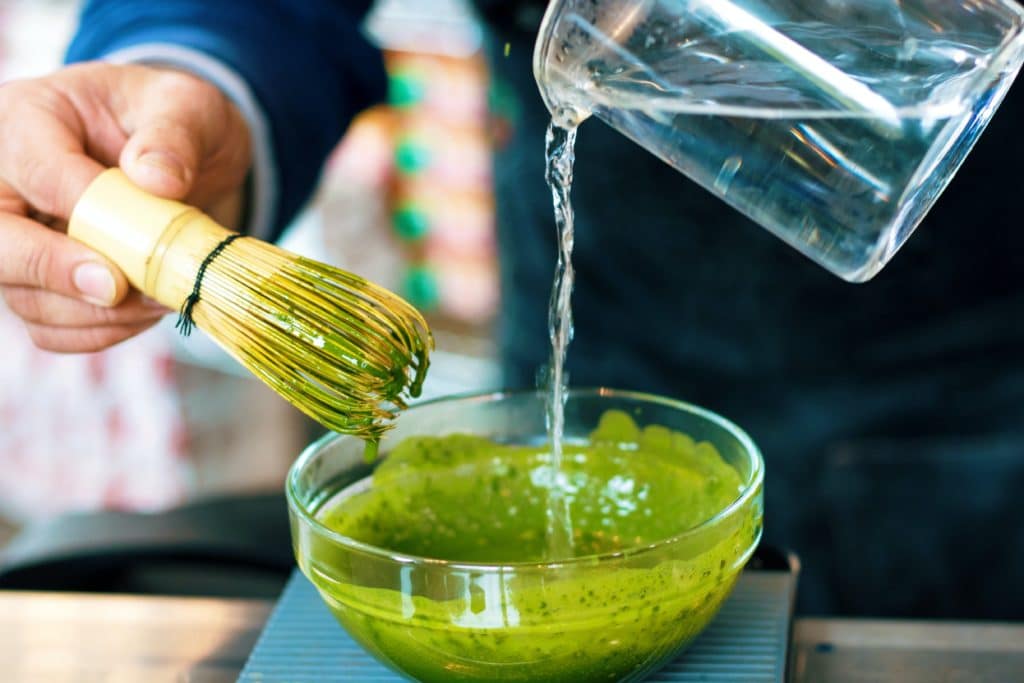
- To prepare a delicious cup of matcha tea, you will need to follow a few simple steps. For a standard 30 cL cup, measure out 1 to 2 teaspoons of matcha powder and place it in the bottom of your cup. Alternatively, you can use a traditional Japanese tea scoop called a Chashaku for exact measurement.
- Next, bring your water to a boil and let it cool for a moment until it reaches a temperature of 70-80 degrees Celsius. Then, pour the water over the matcha powder in your cup.
- To create a frothy texture, you can use a special bamboo whisk called a Chasen, or simply use a regular kitchen whisk. Whisk the mixture gently and consistently in one direction for at least a minute, until a fine foam begins to form on the surface of the tea.
- Your matcha tea is now ready to enjoy! Some people prefer to drink it as is, while others may continue whisking to achieve a smoother texture. Either way, sit back, relax, and savor the unique flavor and numerous health benefits of this amazing green tea.
How to store matcha green tea?
As you certainly know, matcha tea powder is delicate and therefore needs to be carefully preserved. It must be stored away from heat and light. To be sure to keep it in the best conditions, it is advisable to store it in an airtight metal box and in the refrigerator. Note that once opened a matcha tea bag can be kept for 3 to 4 weeks.
Matcha tea recipes
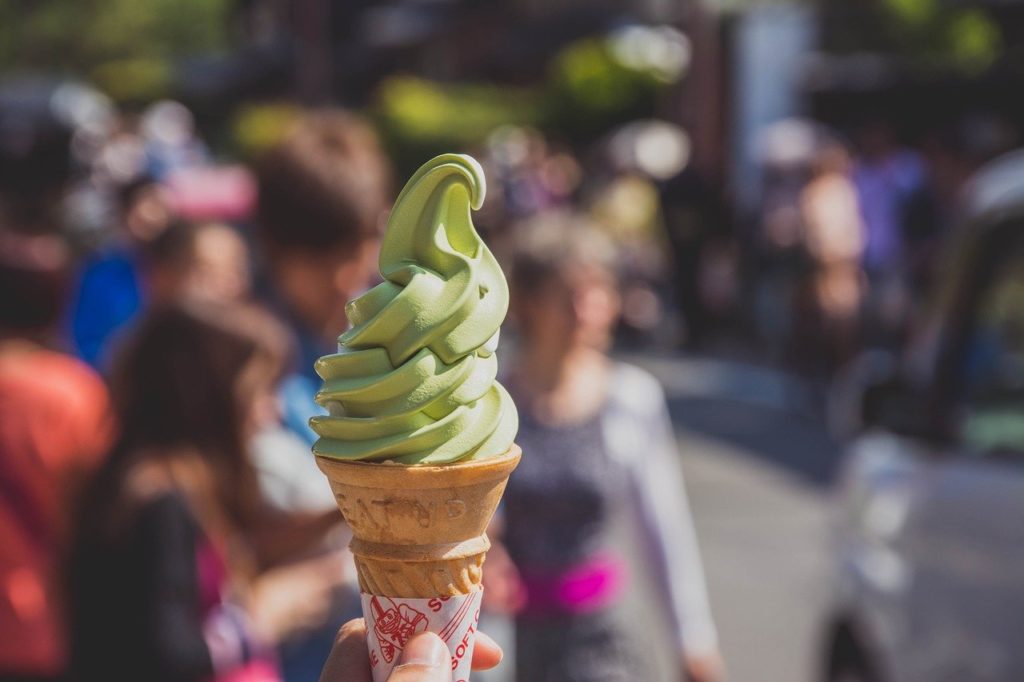
Find our gourmet recipes on matcha tea to consume without moderation! Matcha latte, matcha ice cream, quickly discover all our delicious recipes here.
Want to drink delicious matcha tea when visiting Tokyo? Read our article to find best teahouses in Tokyo serving great matcha!
- 40 Best Japanese Brands That Define Style, Innovation, and Cool (2025)

- Top 14 Japanese Streetwear Brands That Are Redefining Cool Right Now (2025)

- 15 Tokyo Best Bars You’ll Love [2025 Guide]
![15 Tokyo Best Bars You’ll Love [2025 Guide] 3 Tokyo Best Bars](https://tokyocandies.com/wp-content/uploads/2023/08/image-15-150x150.jpg)
- 16 Best Anime and Manga Stores in Tokyo: Otaku Shopping Guide for Every Fan (2025)

- What to Do in Yokohama with kids: 20+ Must-See Spots & Experiences (2025)

